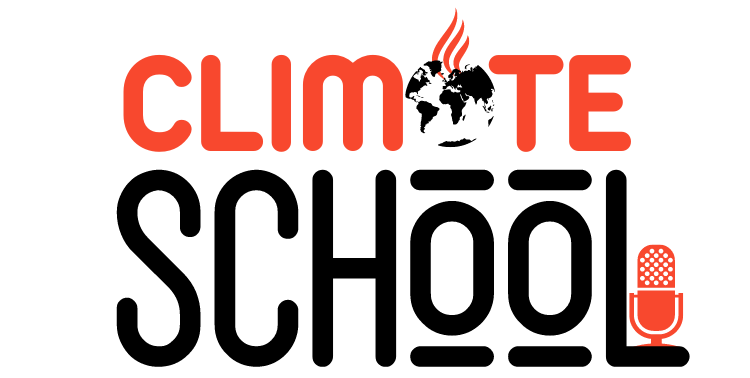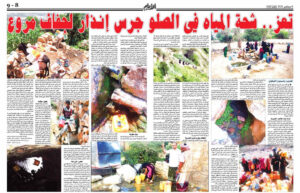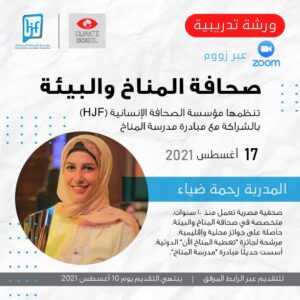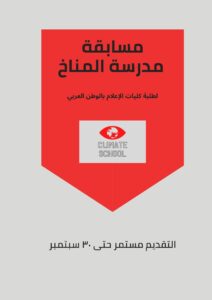Written by: Naira Shanab
“Towards impeccable climate and environmental information” is a new initiative launched by the Radar Newsletter team, coinciding with Egypt’s hosting of the Climate Summit (COP27).
The fifth edition of the bulletin contained several topics, including:
The first axis included the preparation by the Radar Newsletter team of a mini dictionary of a number of environmental terms, including:
Weather: Weather is defined as the daily weather condition monitored by local meteorological agencies.
Climate... Climate is the average weather rates over a fairly long period, not less than 11 years.
Mitigation: Mitigating climate change and preventing it from getting worse through human intervention to reduce emissions or enhance the removal of greenhouse gases through solar and wind energy instead of coal or fossil fuels.
The second axis was entitled: What do those who spread misleading climate information benefit from? Why do they do this?
It's easy to feel startled when you see a post on Facebook or Twitter with a winter weather forecast, about a snow storm coming, or forecasts of long heat waves during the summer, or when you see photos or videos that contain a lot of exaggeration regarding a particular weather condition. .
At the beginning of this year, under the title “Favorite Fake Weather Images,” Weather.com presented the most important images and videos that fake news promoters repeatedly use in every major weather event. The goal of the site is to educate the public about the importance of verifying what they follow about the weather before sharing or believing it.
An article titled “Some Viral Weather Forecasts Are Fake News – Two Reasons They Should Stop Now,” noted years ago that fake weather news should be stopped for two reasons. The first is that it creates misinformation and confusion among people. The second is that fake weather forecasts put the public at risk.
“Five ways to address misinformation on climate change issues.” This was the third topic of the publication:
In an article translated by the Misbar platform from the United Nations News website, entitled “Five ways to address misinformation in climate change issues,” five methods were presented that the press can use to support climate action and combat misinformation:
1 – Stop being overly dramatic
2 - The story of climate change goes beyond climate
3 – Be local and think deeply about climate justice
4 - Building bridges of trust and participation that can contribute to combating misleading information
5 – Be guided by science and embrace “yes”
The fourth topic of the bulletin addressed: 3 free tools for verifying content
PeopleBrowser platform
It allows monitoring and collecting news and social media events according to time and place, and this news can be filtered according to its credibility.
Snopes website
It detects fake news spreading online and can be used to verify user-generated content.
Wolfram Alpha
It is a scientific search engine that helps determine geographical location and weather
The bulletin concluded with a cup of coffee with Rahma Dhia:
Rahma Diaa, an independent Egyptian journalist, trainer, and founder of the “Climate School” initiative, spoke in it. She has been working in journalism for more than 10 years and has won several local and international awards about the importance of verifying information, and about the reason for her choice of climate journalism.
Zia also provided a number of verification-related tips for journalists in their daily work in the fields of scientific and environmental journalism:
I encounter many reports that include numbers that are not attributed to a source or are based on old reports and studies despite the presence of updated numbers issued by the same party or other parties. This sometimes happens as a result of the journalist transferring the number or information from a previous published news or report without referring to the original source of the number. Or information, and for this reason I advise not to mention any number or information without attributing it to its source and mentioning the date of publication of the report or study. It is preferable to provide a link that the reader can refer to, and to ensure that the lack of updated information and numbers on this topic has been neglected to mention.
Paying attention, as we mentioned previously, to the issue of “gray literature,” verifying information from more than one source, paying attention to the accuracy of the numbers announced during conferences or bulletins and statements, and asking about the mechanism by which this data was collected.
Paying attention to the issue of conflict of interest in some studies by referring to the sources of funding for the study. Sometimes a company or institution that promotes a specific product conducts a study with the aim of promoting its interests, and we must be attentive to this issue. If we have another alternative, it is preferable to rely on it in this case, or At least we alert the reader to this.
Providing a simplified explanation of scientific terms and specialized terminology so that the reader does not have any confusion in understanding.
In conclusion, the founder of the “Climate School” initiative spoke about the most prominent challenges she faced at the beginning of her work in scientific and environmental journalism:
There was not much interest from local platforms in this type of topic when I started specializing in this field about 5 years ago, and there were also no specialized training courses at the local level, and the challenge for me was to compete at the international level to win a training opportunity or scholarship. Production, the situation has improved a lot now, of course, with the increased interest in environmental and climate journalism, especially with the beginning of this year and the preparations at the various sector levels for the Twenty-Seventh Conference of the Parties (COP27).
The challenge facing me at the Climate School is to find partnerships with other parties that support the training and services we provide so that we can provide more and conduct face-to-face training targeting a larger number of Egyptian and Arab journalists and maintain our goal of the initiative to continue providing its services free of charge to Arab journalists.
You can view the full bulletin from here.





